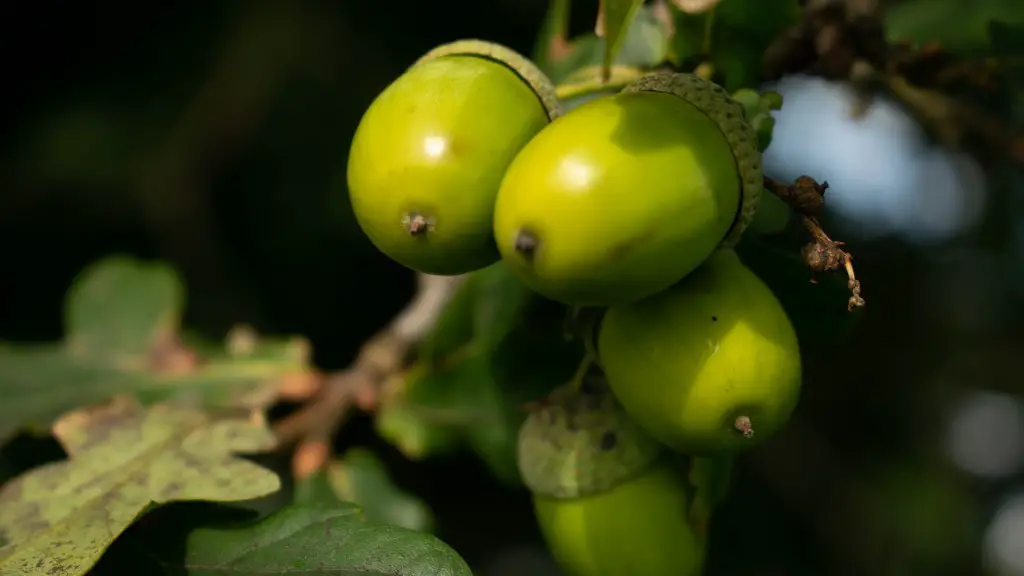Soil Preparation
The first step to successfully growing an avocado tree from a pit is to properly prepare the soil. A well draining soil with a good mix of organic matter is ideal for a young avocado tree. Many experts suggest using a mixture of peat, compost, and fertilizer for optimal soil health. To ensure that the pit takes root and the tree flourishes, it is important to ensure that the soil has a consistency that is moist but not too wet and that it does not dry out quickly. For avocado trees, it is also important to have a soil pH level that is slightly acidic. If the soil is too alkaline, the tree might suffer from nutrient deficiencies.
Replanting the Pit
Once the soil is prepared properly, it is time to replant the pit. When replanting the pit, it is important to take note of the top and the bottom. The top of the pit is pointed, while the bottom is flatter. To be successful when planting, the pointed end of the pit should be facing up. After placing the pit in the hole, the pit should be loosely covered with soil, leaving the top exposed.
Watering Routine
It is essential to establish a regular watering routine for the avocado tree. While there is no set formula for the irrigation regime, many experts suggest that the soil should be watered deeply but infrequently. If the soil is too dry, it is important to water generously, but if the soil is too wet, it is wise to wait longer between watering sessions. Additionally, it is best to avoid ‘overwatering’, as this can cause the roots to rot.
Fertilizing the Tree
Many experienced gardeners suggest that an avocado tree should be fertilized three times a year – once in the spring, once in the summer, and once in the fall. It is important to use the right type of fertilizer to ensure that the tree gets the necessary nutrients to grow. When fertilizing an avocado tree, it is important to opt for fertilizers that are made particularly for avocado trees and that are high in elements such phosphorus, potassium, and nitrogen.
Managing the Flowering and Fruiting Cycle
For an avocado tree to bear fruit, it must first flower. Many avocado trees begin to flower when they are three to five years old. It is important to remember that avocado trees are imperfectly hermaphrodites, meaning that they have both male and female flowers. In order for the tree to produce fruit, it is important to ensure that both male and female flowers are present at the same time. In many cases, simply allowing the tree to be pollinated by bees or other insects can be enough.
Preventing Insects and Disease
It is essential to take preventive measures to protect young avocado trees from insects and disease. The type of preventative measure used will depend on the climate and the location of the tree. It is also important to note that different types of insects and diseases can wreak havoc on young avocado trees. Some of the most common pests and diseases include root-knot nematodes, anthracnose, verticillium wilt, and avocado root rot. The best way to protect the tree is to ensure that it is properly watered and fertilized and promptly respond to any issues that may arise.
Harvesting and Storing Avocados
Typically, a young avocado tree will begin to produce fruit after three to five years, depending on the climate and the health of the tree. When the fruit is ripe, it can be picked off the tree and stored properly. In order to store the avocados, it is important to note that they should be kept cool, dry, and away from direct light. Furthermore, it is also important to ensure that the avocados are ripe before harvesting, as hard avocados can take weeks to ripen.
How to Determine Ripeness
One of the most difficult parts of harvesting avocados is determining whether the fruit is ripe or not. Although there are certain ways to check for ripeness, such as squeezing, pressing, and shaking the fruit, the best way to determine ripeness is by looking for a few key indicators. Firstly, ripe avocados should be dark green in colour and should have lightly bumpy skin. Secondly, when lightly squeezed, ripe avocados will feel slightly soft and tender. Lastly, the fruit should give off a pleasant, earthy smell.
Advantages of Growing an Avocado Tree from the Pit
Growing an avocado tree from the pit has many advantages. Firstly, growing an avocado tree from the pit is relatively easy and inexpensive, as the only requirements are soil, water, and fertilizer. Secondly, growing an avocado tree from the pit allows individuals to enjoy homegrown avocado fruit free of harmful chemical residues. Finally, growing an avocado tree from the pit provides individuals with a sense of satisfaction and accomplishment, as they can watch the tree grow, flower, and bear fruit.
Choosing the Right Variety
When selecting an avocado tree, it is important to choose the right variety. This can be tricky, as there are many different varieties that exist. To select the best variety, it is essential to consider the climate in which the tree will be planted and the size of the tree. For example, types such as Hass and Bacon are suitable for colder climates, whereas Fuerte and Pinkerton are better options for warmer climates. Additionally, some varieties, such as Bacon and Pinkerton, tend to grow larger and have larger fruit, whereas varieties such as Zutano and Gwen have a smaller size and produce smaller fruit.
Providing Shade and Support
For a young avocado tree, it is important to ensure that it receives adequate amount of shade in order to protect it from direct sunlight. Without proper shelter, the tree can become stressed and weak, making it vulnerable to diseases. Additionally, it is important to note that some avocado trees can reach heights up 40 feet, so it is best to make sure that sturdy support is provided. Doing so will reduce the probability of breakage due to wind or heavy fruit.
Pruning an Avocado Tree
Pruning an avocado tree is another important step in growing it from the pit. This should be done in order to maintain a balanced structure of branches and to encourage new growth. When pruning an avocado tree, it is important to remove dead or diseased branches as well as any branches that are too weak to support the weight of the fruit. Additionally, pruning should be done during the dormant season, usually from late winter to early spring.


